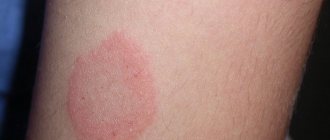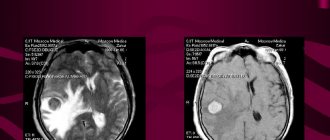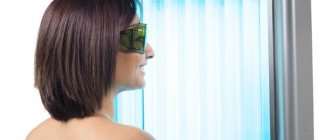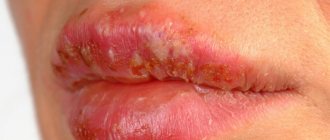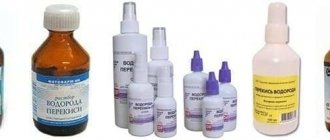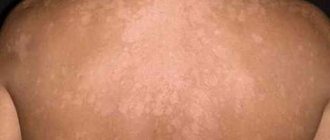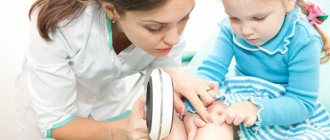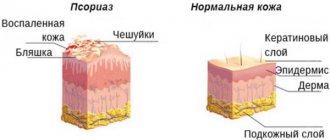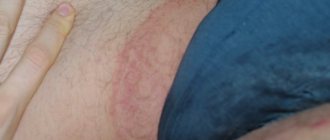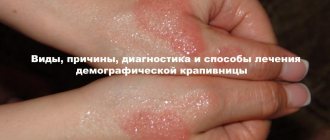Papulo pustular acne is one of the types of acne. Such formations appear due to the inflammatory process in comedones. The rash is characterized by the appearance of papules and pustules, which often leave behind scars or pigmented spots on the skin. What precedes such neoplasms and how to deal with them will be discussed below.
Papular acne: characteristics
As you can see in the photo, acne is inflammatory in nature. Such inflammation occurs on the human skin due to damage to the hair follicle or when the sebaceous glands malfunction. Most often, pustular acne occurs in the facial area. Why?
The fact is that the skin on the face is very delicate and sensitive to various irritants. The second reason is that there are many sebaceous glands in this area.
Therefore, acne, the second name for acne, occurs most often in the face area. It is worth noting that with this dermatological disease, a pustule appears on the human skin, which means blisters. In addition, papules (nodules) appear.
We have already said that this disease occurs more often in women, namely at the age of 16-19 years. I would like to note that the true cause of this pathology is unknown. But, there are several factors that can lead to the formation of papulo-pustular acne.
Environmental factors:
- In case of disruption of the sebaceous glands, as a rule, if a person has a history of seborrhea.
- With reduced immunity.
- During puberty. Since at this moment a person experiences a hormonal imbalance.
- Disturbance in the functioning of the central nervous system, such as stress.
- Poor nutrition.
- Failure to comply with personal hygiene rules.
In addition, there are several other factors that can lead to the development of papular pustular acne - heredity and genetic predisposition.
With this disease, purulent formations form on the skin, which also occur due to injury to the epidermis or when exposed to chemicals.
For example:
- Iodine.
- Chlorine.
- Fluorine.
Medicines are one of the common causes. If you take drugs from the barbiturates or lithium series for a long time, acne may occur.
According to statistical data, the occurrence of the disease during menopause has been noted. At this moment, insufficient production of estradiol occurs in the female body. That's why defeats occur.
Treatment regimen
Papulopustular acne is definitely a reason to visit a doctor and undergo therapy. Treatment of acne requires an integrated approach that combines local and systemic correction. Among the general recommendations, it is worth noting the following:
- Compliance with personal hygiene rules.
- Adequate facial skin care.
- Rejection of bad habits.
- Healthy eating.
Treatment regimens are created by the doctor individually for each patient, taking into account the severity and clinical form of acne. As the severity of the inflammatory process increases, the intensity of therapeutic correction also increases.
Treatment of acne on the face is a responsible process that requires the patient to strictly adhere to medical recommendations.
How are lungs treated?
The main method of treating mild forms of acne is correction with topical medications. The following drugs are used for this:
- Antibacterial (Zinerit, Dalatsin, erythromycin ointment).
- Anti-inflammatory (Curiosin, Pyolysin).
- Sebum-regulating agents (zinc, azelaic acid, retinoids).
- Keratolytics (salicylic acid, benzoyl peroxide, Adapalene).
Antimicrobial drugs are prescribed not only for mild forms of acne, but are also included in complex treatment regimens for more severe acne.
Clinical picture of papulopustular formation
It is worth noting that with this disease, a pustular formation occurs, which is presented in the form of pustules. As a rule, the formations are not large in size, most often up to 5 mm in diameter. In this case, you can notice a hemispherical shape, this is the first distinguishing feature from other acne.
As you can see in the photo, the skin above the nodule takes on a pink-red hue. In rare cases, red-blue, at the base of which there is an infiltrate.
If measures are not taken in time, after 2-3 days it begins to increase in size, thereby bringing a lot of discomfort to the person. As the formations progress, a comedon - an abscess - appears in the center. During this period, a person experiences pain. After which, the tubercular abscess opens on its own with the release of its contents or dries out, as a result of which a small crust forms on the epidermis.
The clinical picture is pronounced, so a spot or crust appears in this place.
Diagnostics
Diagnosis of the disease most often does not require special laboratory tests and consists of analyzing the process of disease development and the clinical picture. Koebner's symptom is characteristic - the appearance of new psoriatic elements in the area of tissue damage and trauma. In atypical cases, a histological method is used - microscopic examination of tissue. However, to carry out differential diagnosis, a complete clinical and laboratory examination is necessary. Pustular psoriasis is an atypical and rare form of this pathology. Therefore, such patients require in-depth examination, including immunological examination.
Pustular acne: severity
There are three degrees of severity. The first degree is easy. In this case, comedones are formed on the human skin. It is worth noting that with a mild course, no more than 10 pustular acne is observed on the epidermis.
The average course of the disease is characterized by a large rash. 10-40 acne are formed. If treatment is not started on time, moderate severity quickly becomes severe, complicating the general condition.
Severe stage, in the photo you can see that acne is represented by multiple inflammatory rashes. Treatment is difficult, since often with this course phlegmonous or conglobate forms are formed.
Acne treatment
As a treatment, the doctor carries out not only local, but also systemic therapy. The therapeutic course depends on the severity of the disease, as well as on the general condition of the patient (concomitant diseases).
At home, doctors recommend that the affected area be thoroughly treated. You can use Levomycytin, Salicylic alcohol. If there are wounds on the skin, then salicylic alcohol cannot be used in treatment, as a strong burning sensation will occur.
Talkers are the most common way to get rid of a dermatological defect. You can prepare them at home. Sulfur or ichthyol is used.
Without fail, doctors prescribe keratolytics. Medicines from this group help normalize the process of keratolization, directly at the mouth of the follicle. In addition, the medicine will help prevent the formation of comedones, which is very important for this disease.
Abscess syndrome, which so often occurs with acne, can be suppressed with retin-A (retinoid). You can buy the product in any form: cream, lotion.
Application: apply the drug to the affected area 2 times a day. The course of treatment is 1-1.5 months, depending on the degree of damage.
The drug Adapalene has proven itself well. The drug contains a retinoid matebolite. With the help of this component, the inflammatory syndrome is quickly eliminated and the risk of comedones is reduced.
Treatment with the drug is long-term, 2-3 months. In addition to Adapalene, a vitamin complex is prescribed to maintain immunity.
Eye disease associated with rosacea
Eye diseases such as conjunctivitis very often occur against the background of rosacea. Often the main symptom is considered to be problems not with the skin, but with the eyes, tearing, dryness or a feeling that there is a foreign body inside. In some cases, the eyelids swell, the skin peels, and photosensitivity occurs. In case of serious diseases, blindness of the papular inflammatory type develops.
This disease is close to acne, it is chronic in nature, and the symptoms often recur.
It is impossible to be completely cured, but if you use comprehensive treatment, you can achieve sustainable remission. The sooner you detect the appearance of this disease, the easier it will be to fight it, and most importantly, you will have to take care of your skin in a special way every day. A man with such a disease should shave not with disposable razors, but with an electric razor. We hope that now you know a lot more about papulo-pustular acne, and will keep an eye on it. At the first sign, you should definitely consult a specialist and get rid of the disease.
What to do if complications of papulo-pustular acne occur?
In case of complications, doctors prescribe antibiotics. But, before prescribing drugs, the sensitivity of the infectious agent to antibiotics is determined.
Prescribed:
- Zenerite.
- Pyolysin.
- Skinoren.
All medications have a wide spectrum of action, so they are prescribed after consultation with a doctor. The course of treatment is 21 days.
If necessary, prescribe: Tetracycline, Clindamycin, Zhdosamycin. When using these drugs, the doctor additionally prescribes retinoids. For example: Retasol, Retinoic ointment, Oxy 10.
In addition to drug treatment, physiotherapy is carried out. Used for this disease: darsonvalization, microcurrent therapy, ultrasonic cleaning.
Acne cryotherapy and cryomassage are actively used. Such procedures help reduce sebum secretion. To eliminate scars, doctors may prescribe laser peeling, dermabrasion, laser scar removal, see photo.
Important! Each method has its own contraindications, so before prescribing a method of physical therapy or scar removal, the doctor conducts a thorough diagnosis of the patient. If necessary, consultation with specialized specialists is scheduled.
A positive effect can be achieved with the juice of parsley, viburnum or melon. Such ingredients help eliminate signs of inflammation and remove dryness.
Calendula tincture has an antibacterial spectrum and is therefore used in conjunction with drug treatment. Soak a cotton pad in the tincture and wipe the affected areas.
If you are allergic to calendula tincture, doctors prescribe other methods based on your medical history.
Other traditional methods that help with this dermatological rash can be used in treatment. Before using any prescription, you should consult your doctor.
It is necessary to clearly understand that the faster you detect the signs of papulo-pustular acne, the faster you can get rid of them. The main thing is that you should not self-treat with drugs and other folk recipes to avoid complications.
Operating principle of high-intensity broadband light
Today, the Joule platform offers a wide range of applications with one universal attachment, which allows you to integrate various modules into your practice to correct both age-related changes in the face and body.
In particular, the BBL™ (BroadBand Light) module, a system of high-intensity broadband light, gives the doctor the opportunity to conduct effective acne therapy, while removing vascular pathology, benign pigmented tumors, and rejuvenating the skin.
BBL™ (BroadBand Light) generates broadband light (range 400 to 1400 nm).
The technique combines flash lamps, replaceable filters, magnetic adapters and controlled cooling through a thermoelectric cooled sapphire crystal, which ensures safety in the affected area. For each procedure, you can set your own cooling temperature, ranging from 0 to 30 degrees.
Replaceable smart filters allow you to solve several problems within one procedure, using different wavelengths, without interrupting therapy.
The mechanism of action is based on selective photothermolysis - selective exposure of tissue to pulses of light with wavelengths from 420 to 1200 nm. This allows you to selectively influence chromophores (hemoglobin and melanin), heating them to a given temperature. Controlling the heating temperature and wavelength changes the nature of light absorption and the area of heat release in the tissue. At the same time, the light does not damage the surface layers of the skin.
The purpose of the treatment is to heat the tissue to a temperature sufficient to destroy it, but not to such an extent that the heat would damage the skin and nearby tissue. Thermal denaturation of collagen stimulates a cascade of reactions releasing inflammatory mediators and the synthesis of new collagen (Masychev, Gudkin 2001).
Selective photothermolysis is based on three critical parameters:
- pulse width (length of time during which the target is exposed to heat)
- fluence (amount of energy delivered to the target)
- wavelength (the shorter it is, the more superficial the effect; the longer it is, the deeper the light or heat is delivered into the tissue)
The difference between broadband devices and laser devices
- Emission of ordinary light
- The emitted wavelength is not strictly fixed
- The wavelength range is quite wide (420–1200 nm)
- Light is non-monochromatic
- The duration of light pulses can range from units to several tens of milliseconds
- Ability to adjust the depth of light penetration into tissue
- Possibility of flexible variation of light flash energy density
- Ability to change the duration of pulses and the intervals between them

